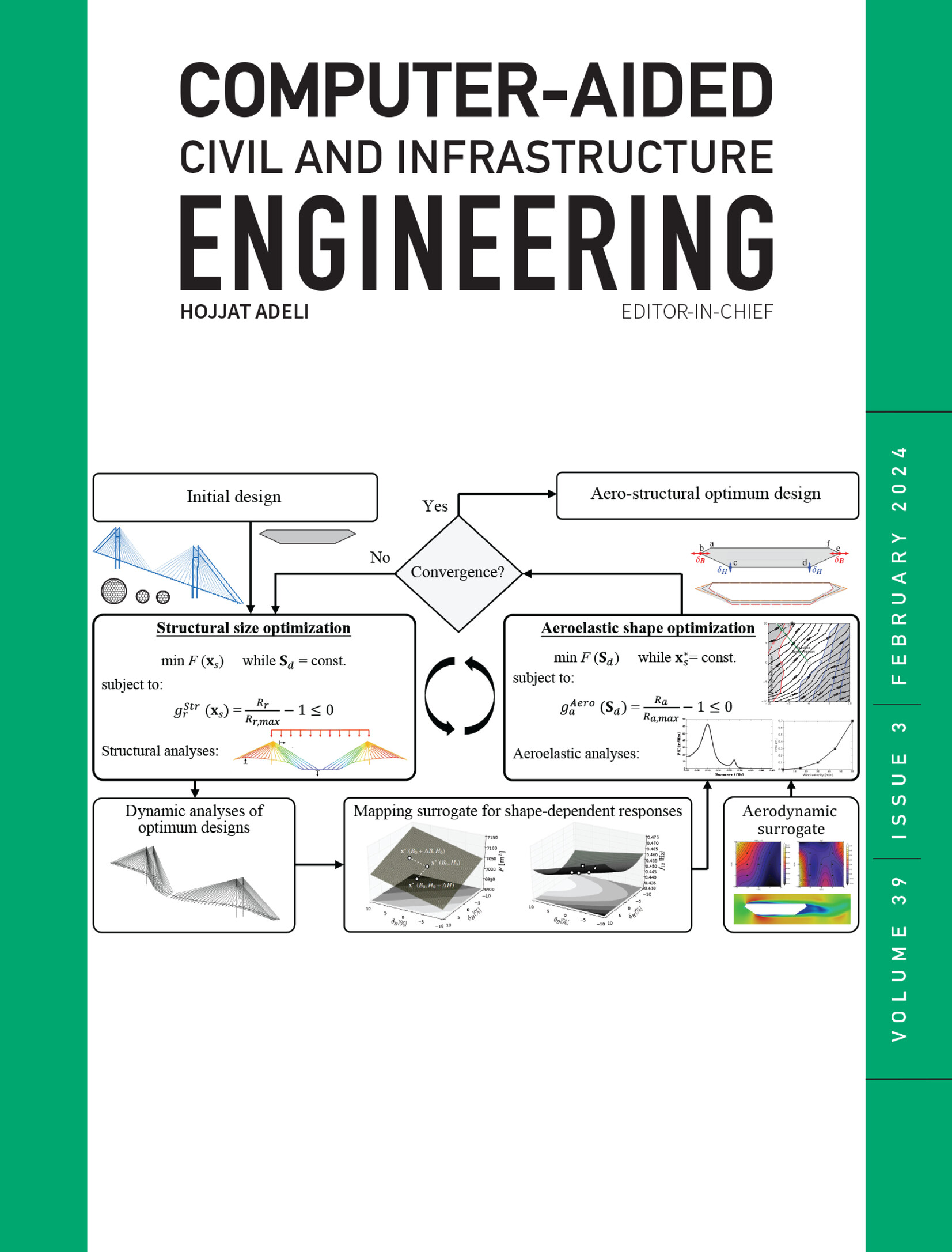Anti-frequency long short-term memory model for stable estimation of structural response under noise conditions
IF 9.1
1区 工程技术
Q1 COMPUTER SCIENCE, INTERDISCIPLINARY APPLICATIONS
引用次数: 0
Abstract
Deep learning models for structural response estimation exhibit degraded performance when the training and input data characteristics differ, particularly because of noise. This study proposes an anti-frequency long short-term memory (AF-LSTM) model designed to ensure a stable estimation regardless of noise conditions. The term “anti-frequency” is used to describe the process of suppressing predefined frequency components by setting them to zero in the frequency domain. The AF-LSTM model introduces an AF layer before the LSTM layer, which suppresses specific frequency components before learning. The AF layer transforms the input into the frequency domain, zeroes out the components within predefined noise-prone frequency bands, and converts the signal back to the time domain. This process enables LSTM to effectively learn and estimate structural responses with improved consistency, even under noise conditions. The proposed model was verified using a numerical three-degree-of-freedom system, demonstrating stable estimation performance under varying noise frequencies and amplitude ratios. Experimental validation on a three-story steel frame structure and acceleration data from a real 55-floor building with environmental noise confirmed the model's ability to estimate stable responses across non-stationary inputs.噪声条件下结构响应稳定估计的抗频长短期记忆模型
当训练和输入数据的特征不同时,特别是由于噪声的影响,用于结构响应估计的深度学习模型表现出性能下降。本研究提出了一种抗频率长短期记忆(AF-LSTM)模型,旨在确保在任何噪声条件下的稳定估计。术语“反频率”用于描述通过在频域中将预定义的频率分量设置为零来抑制它们的过程。AF-LSTM模型在LSTM层之前引入AF层,在学习之前抑制特定的频率成分。自动对焦层将输入转换到频域,在预定义的容易产生噪声的频带内将分量归零,并将信号转换回时域。该过程使LSTM能够有效地学习和估计结构响应,即使在噪声条件下也能提高一致性。通过数值三自由度系统验证了该模型在不同噪声频率和幅值比下的稳定估计性能。在一个三层钢框架结构上的实验验证和一个真实的55层建筑的环境噪声加速度数据证实了该模型在非平稳输入下估计稳定响应的能力。
本文章由计算机程序翻译,如有差异,请以英文原文为准。
求助全文
约1分钟内获得全文
求助全文
来源期刊
CiteScore
17.60
自引率
19.80%
发文量
146
审稿时长
1 months
期刊介绍:
Computer-Aided Civil and Infrastructure Engineering stands as a scholarly, peer-reviewed archival journal, serving as a vital link between advancements in computer technology and civil and infrastructure engineering. The journal serves as a distinctive platform for the publication of original articles, spotlighting novel computational techniques and inventive applications of computers. Specifically, it concentrates on recent progress in computer and information technologies, fostering the development and application of emerging computing paradigms.
Encompassing a broad scope, the journal addresses bridge, construction, environmental, highway, geotechnical, structural, transportation, and water resources engineering. It extends its reach to the management of infrastructure systems, covering domains such as highways, bridges, pavements, airports, and utilities. The journal delves into areas like artificial intelligence, cognitive modeling, concurrent engineering, database management, distributed computing, evolutionary computing, fuzzy logic, genetic algorithms, geometric modeling, internet-based technologies, knowledge discovery and engineering, machine learning, mobile computing, multimedia technologies, networking, neural network computing, optimization and search, parallel processing, robotics, smart structures, software engineering, virtual reality, and visualization techniques.

 求助内容:
求助内容: 应助结果提醒方式:
应助结果提醒方式:


